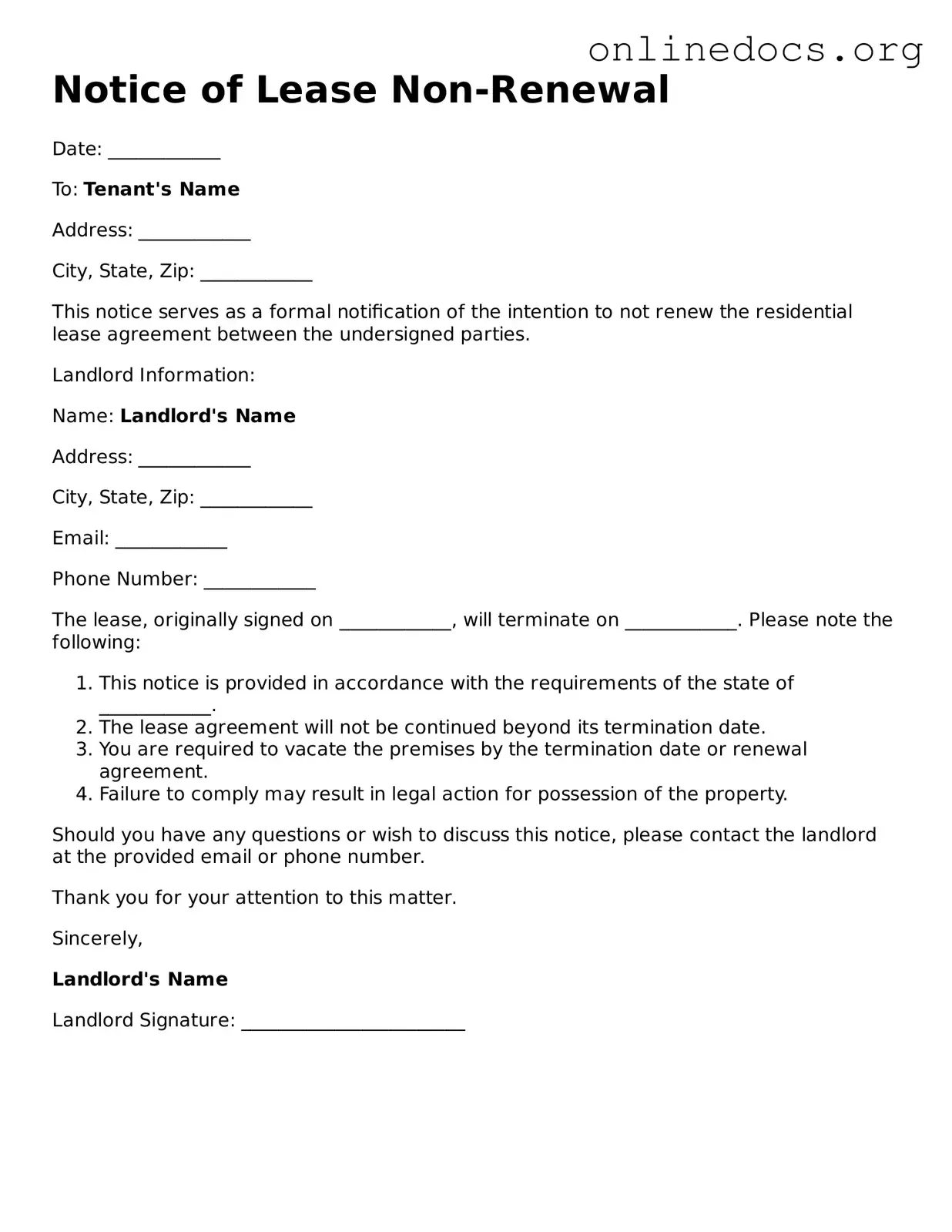The Notice of Lease Termination form serves a similar purpose to the Notice of Lease Non-Renewal form. Both documents communicate the intent to end a lease agreement. While the Notice of Lease Non-Renewal specifically indicates that the lease will not be extended beyond its current term, the Notice of Lease Termination can be used to terminate a lease before its expiration date. This document outlines the reasons for termination and provides a timeline for vacating the premises, ensuring clarity for both parties involved.
The Lease Agreement form is essential in outlining the legal framework for rental properties and can be found at legalformspdf.com. By clearly defining the roles and responsibilities of landlords and tenants, it helps to mitigate disputes and misunderstandings. This documentation includes vital information such as the rental terms, duration of the lease, and any specific rules that must be followed during the tenancy, ensuring both parties are on the same page regarding their commitments.
The Lease Renewal Agreement is another document that shares similarities with the Notice of Lease Non-Renewal form. While the Notice of Lease Non-Renewal indicates that the lease will not be renewed, the Lease Renewal Agreement confirms the continuation of the lease under specified terms. This document is typically signed by both parties and includes any changes to the original lease terms, thereby establishing a new agreement for the extended period.
The Eviction Notice, also known as a Notice to Quit, is related to the Notice of Lease Non-Renewal form in that both documents signal a change in the tenant's status. An Eviction Notice is issued when a tenant has violated lease terms and must vacate the property, while the Notice of Lease Non-Renewal simply informs the tenant that the lease will not continue. Both documents require clear communication and adherence to legal protocols, although the circumstances surrounding their issuance differ significantly.
The Rent Increase Notice can also be compared to the Notice of Lease Non-Renewal form. Both documents inform tenants about significant changes to their lease agreements. A Rent Increase Notice specifies a new rental amount that will take effect after the current lease term, while the Notice of Lease Non-Renewal indicates that the lease will not be extended. These documents are essential for maintaining transparency in the landlord-tenant relationship, ensuring that tenants are informed of their options moving forward.
Finally, the Lease Assignment Agreement bears similarities to the Notice of Lease Non-Renewal form in terms of lease transferability. A Lease Assignment Agreement allows a tenant to transfer their lease obligations to another party, while the Notice of Lease Non-Renewal indicates that the current lease will not continue. Both documents require the consent of the landlord and emphasize the need for clear communication regarding the tenant's rights and responsibilities.
